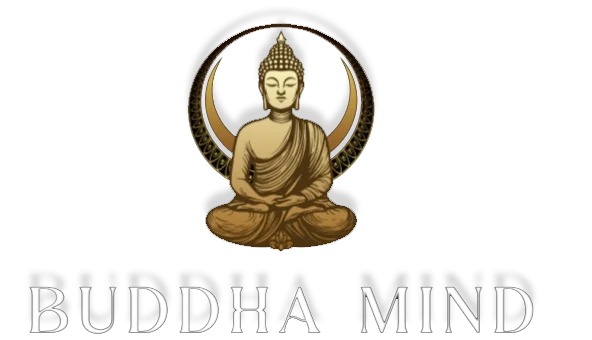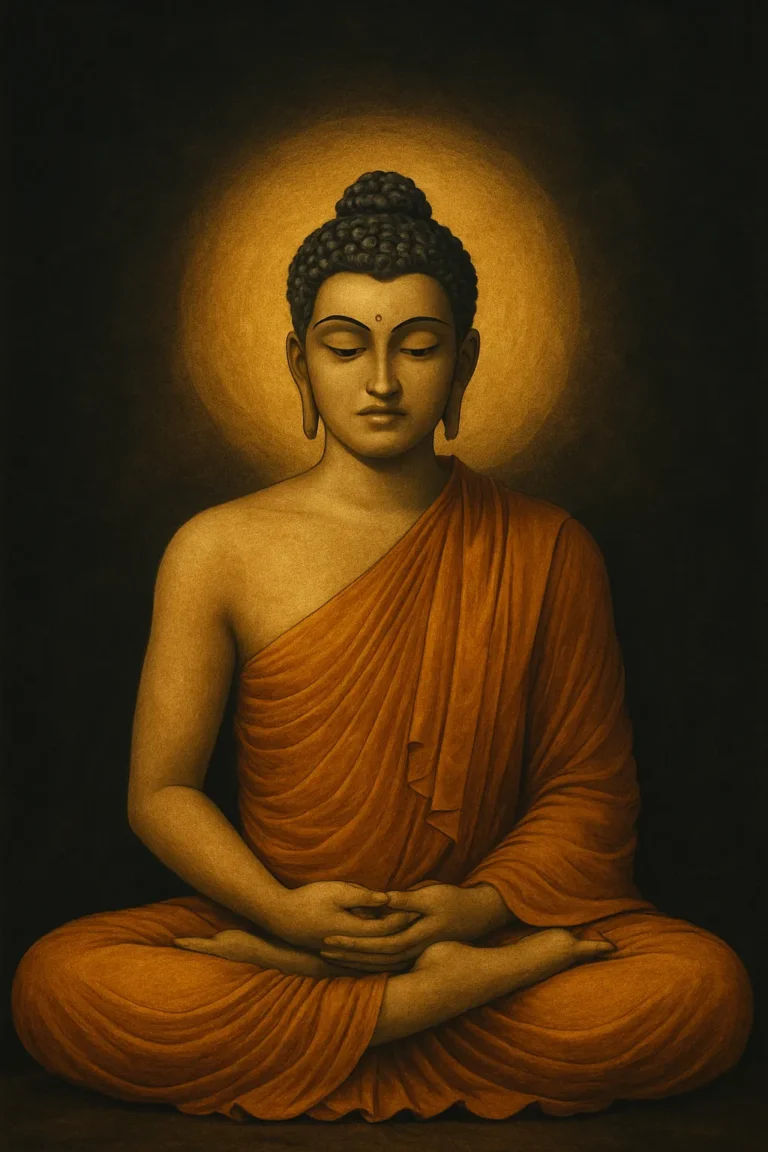Anapana Meditation: Training the Mind Through Breath Awareness
What Is Anapana?
Anapana is the foundational practice in the broader tradition of Vipassana meditation. At its core, Anapana involves nothing more—and nothing less—than the observation of one’s natural breath, exactly as it flows in and out, without manipulation or force.
This simple yet powerful technique offers a universal approach to mental training. There are no mantras, no rituals, and no need for belief systems. By focusing on the natural rhythm of the breath, Anapana helps sharpen concentration and brings the wandering mind into the present.
It is a practical answer to the question many ask in meditation: Where do I begin? The answer is simple—start with the breath. Start with Anapana.
Why Breath?
The breath is a constant companion. It is available in every moment and is free of cultural or religious boundaries. Whether you are young or old, religious or secular, your breath is yours—and it reflects your state of mind with astonishing accuracy.
This is what makes Anapana such a universal practice. It is not “Hindu breath,” “Muslim breath,” or “Christian breath.” It is simply breath—untouched by labels. And it is deeply intertwined with our mental landscape.
When anger, fear, or anxiety arise, the breath becomes fast and erratic. When the mind is calm, the breath softens. By observing this natural rhythm, we begin to notice the connection between mental states and physical sensations, building self-awareness from the inside out.
Anapana vs. Vipassana: The Distinction

Though Anapana is part of the Vipassana tradition, the two practices serve different purposes.
- Anapana is the training ground. It anchors the mind, cultivates focus, and creates a stable mental environment.
- Vipassana goes deeper. It is the practice of insight—examining the nature of mind and matter to uproot mental impurities.
You can think of Anapana as the base of a structure and Vipassana as the building that rises from it. Without a stable base, the higher practice is fragile. Without breath awareness, inner insight is unfocused.
The Tether Analogy
S. N. Goenka, a modern teacher of the Vipassana tradition, likened Anapana to tying a restless calf to a post. The mind, like the calf, wants to wander. By tethering it to the breath—specifically the sensation at the base of the nose—we gently train it to stay.
This is not suppression. It is training. Over time, the mind learns to settle, to attend, and to observe.
Why Anapana Works Across Ages

Anapana has proven effective for people across a wide age range, including children. It offers a structured way to deal with stress, distraction, and emotional overload without external tools or guidance. In classrooms, meditation halls, and homes, this practice provides:
- A calming anchor during anxiety
- A focus aid during study
- A tool for emotional regulation in times of conflict
Its simplicity is its strength.
The Science Behind It
Breath is the bridge between the conscious and unconscious. It connects voluntary acts (like choosing to focus) with involuntary processes (like the heartbeat). When we focus on the breath, we begin to influence deeper systems of awareness.
This is why Anapana is not mere relaxation. It is the first step toward profound self-mastery.
Comparison of Anapana and Vipassana
| Aspect | Anapana | Vipassana |
|---|---|---|
| Purpose | Focus and concentration | Insight and purification |
| Method | Observing natural breath | Observing sensations across body/mind |
| Depth | Surface-level training | Deep-rooted exploration of mind patterns |
| Entry Requirement | Suitable for all ages | Requires stable focus and prior practice |
| Role in Path | Foundation | Main tool for transformation |
The Role of Anapana in Modern Life
In a world of distractions, mental fatigue, and information overload, the ability to focus is becoming rare—and valuable. Anapana offers a way to reclaim attention. You don’t need a retreat or a meditation cushion. Just a quiet space and a few minutes.
This technique is especially relevant for young people. Schools that have introduced Anapana report improved focus, better classroom behavior, and reduced anxiety among students.
Adults, too, benefit from daily practice—managing deadlines, family stress, and internal emotional patterns through a few minutes of calm breath awareness.
Structure of Anapana Sessions
Modern Anapana sessions are designed to be highly accessible. Typically, these sessions last between 30 to 40 minutes and follow a consistent structure:
- Introduction to the Practice – A short explanation of the technique.
- Breath Observation Period – Participants silently observe their natural respiration.
- Metta Session (Optional) – A few minutes of generating goodwill for all beings.
These sessions are now offered in over 30 languages through guided audio and video formats. Whether it’s an in-person gathering or a self-guided session at home, Anapana’s structure is meant to be simple, inclusive, and practical.
Guidelines for Participation
To maintain the integrity of the practice, certain standards are encouraged:
- Sessions should be conducted in quiet spaces free from distractions.
- Participants should observe noble silence—no talking, no interaction.
- Male and female participants are seated separately, respecting traditional structures.
- No fee is ever charged—Anapana is offered freely as a universal benefit.
These conditions reflect the non-commercial, ethical spirit of the Dhamma tradition.
Integration Into Daily Life
Learning Anapana is only the beginning. Its true value comes from consistent practice. Just 10 to 15 minutes twice a day—morning and evening—can deliver visible benefits.
This daily rhythm becomes a mental hygiene routine. Just as we wash our body, Anapana helps cleanse the mental residue of stress, irritation, and distraction. Over time, this habit strengthens the mind’s clarity and stability.
Daily Practice Recommendations
- Choose a quiet, comfortable space where you won’t be disturbed.
- Sit with your back straight, eyes gently closed.
- Begin by observing your natural breath—don’t control or deepen it.
- Notice the breath at the entrance of the nostrils or upper lip area.
- If the mind wanders, gently bring it back to the breath.
- Conclude with a few moments of goodwill or Metta.
Even if the mind seems distracted during a session, the effort itself builds momentum.
Reported Benefits of Anapana
Across decades of teaching and practice, Anapana has yielded tangible results for practitioners from all walks of life. While each person’s experience is unique, several commonly reported outcomes include:
Cognitive Benefits
- Improved concentration and memory retention
- Enhanced decision-making capacity
- Greater alertness and self-awareness
Emotional Benefits
- Reduced anxiety and nervousness
- Decreased stress and mental tension
- Calmer responses to conflict and pressure
Behavioral and Social Benefits
- Better communication and self-expression
- Increased patience and empathy
- Stronger sense of discipline and responsibility
Inner Development
- Sharper mastery over the mind
- A wholesome sense of internal strength
- Natural inclination toward kindness and goodwill
Benefits of Daily Anapana Practice
| Area of Impact | Specific Outcomes |
|---|---|
| Cognitive | Sharper memory, sustained attention, clearer thinking |
| Emotional | Reduced anxiety, improved resilience |
| Social/Behavioral | Thoughtful communication, patience, respect |
| Inner Wellbeing | Peace of mind, mastery over reactivity, joy in giving |
Anapana as Cultural Wisdom
In the modern age, where ancient practices are often commercialized or rebranded, Anapana stands out as a tradition preserved with integrity. Taught freely and without rituals, its power lies not in belief, but in practice.
The question is not whether you agree with Anapana, but whether you have experienced what happens when the mind stops running toward the past and future. In those rare moments of stillness, one begins to understand what it means to live fully—right here, right now.
As a cultural historian might note, Anapana is not a borrowed tool—it is part of an ancient Indian heritage rooted in experiential understanding rather than dogma. It reflects a time when wisdom was measured by inner transformation, not external performance.







